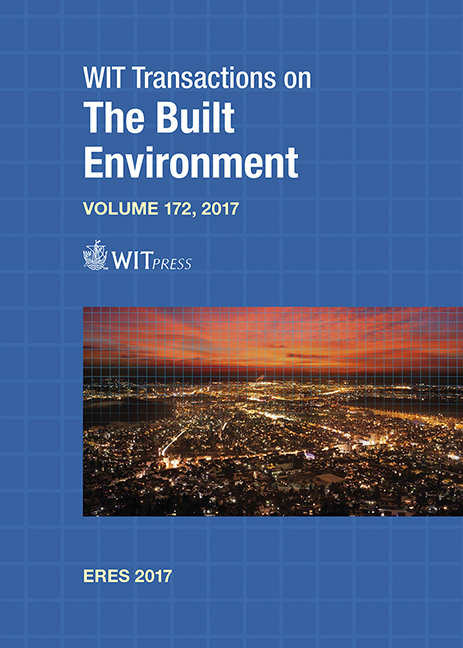SEISMIC PERFORMANCE OF A MASONRY BUILDING ISOLATED WITH LOW-COST RUBBER ISOLATORS
Price
Free (open access)
Transaction
Volume
172
Pages
12
Page Range
71 - 82
Published
2017
Size
1,004 kb
Paper DOI
10.2495/ERES170071
Copyright
WIT Press
Author(s)
AHMAD B. HABIEB, GABRIELE MILANI, TAVIO, FEDERICO MILANI
Abstract
New residential buildings in developing countries often have inadequate seismic protection, particularly for masonry. Such material is widely preferred because the cost and application are relatively cheap. To decrease the vulnerability, an interesting option is represented by seismic isolation, but the cost should remain relatively low, and this is the reason why rubber isolation with few pads remains the most suitable technical solution to adopt. In this study, we deal with a newly conceived low-cost seismic isolation system for masonry buildings relying on elastomeric bearings. The elastomeric isolator here proposed consists of few layers of rubber pads and fiber lamina, making it cheaper compared to the conventional isolators. A detailed 3D finite element (FE) analysis to predict the behavior of the low-cost rubber isolator undergoing moderate deformations is carried out. A Yeoh hyperelasticity model with coefficients estimated through available experimental data is assumed for rubber pads. Having so derived the shear behavior, such an isolation system is implemented at a structural level into a two story masonry house prototype, identifying the 3D model with a damped nonlinear spring model, so making the FE analysis computationally inexpensive. For masonry, a concrete damage plasticity (CDP) model available in the commercial FE code Abaqus is adopted. A nonlinear static-pushover analysis is conducted to assess the performance of the isolated building. To simulate a realistic condition under a seismic event, ground motion data is applied to observe the dynamic behavior of the building by monitoring the damage level of masonry. Through a-posterior estimation, it is also possible to monitor the deformation of the isolators during the seismic excitation, to determine whether the isolator is capable of resisting shear deformations in different angles. According to the results obtained, quite good isolation is obtained with the system proposed, with immediate applicability at a structural level.
Keywords
masonry housing, low-cost seismic isolation, rubber isolators, advanced FE modelling, non-linear static pushover analyses, dynamic analyses





